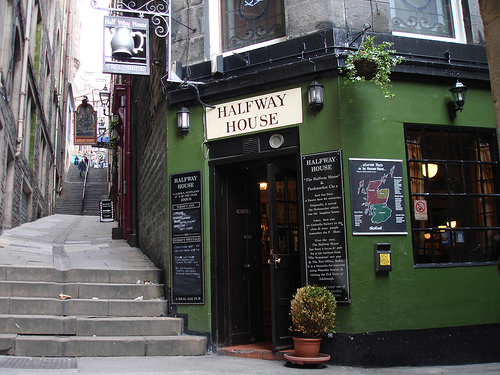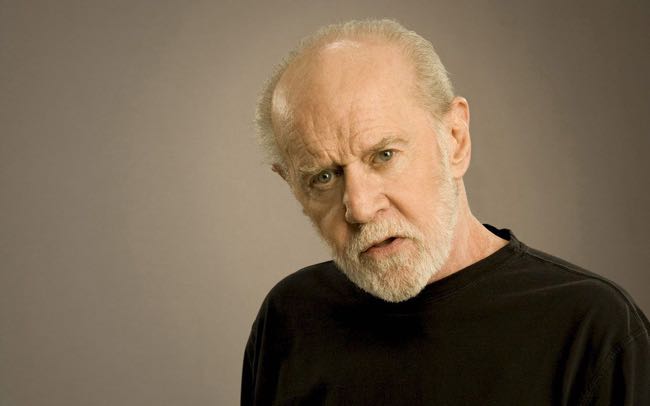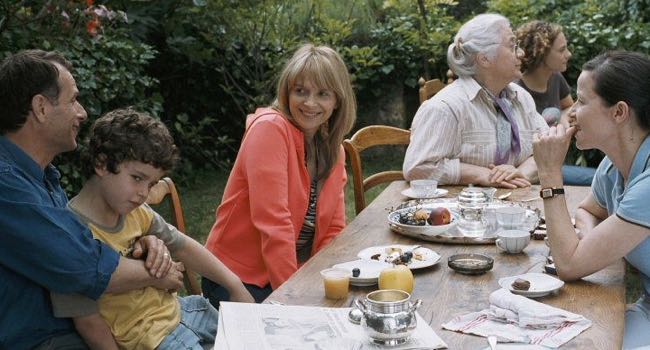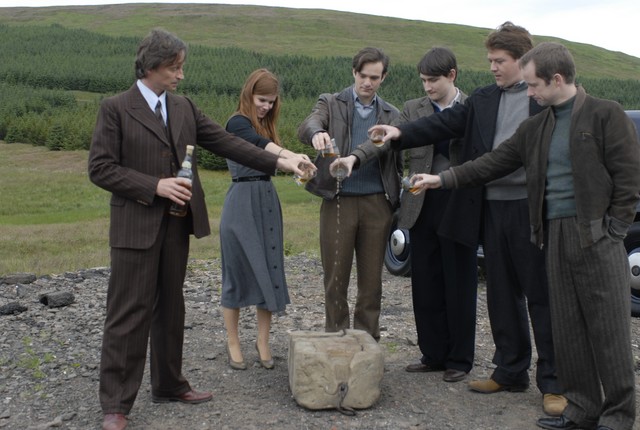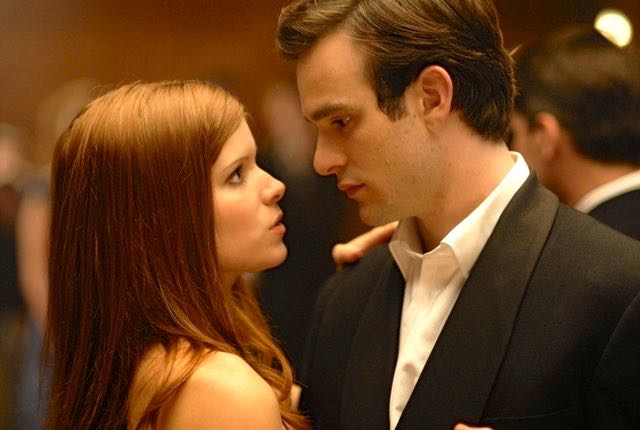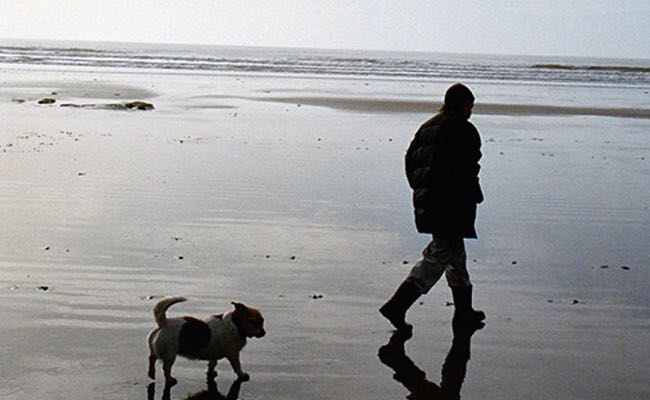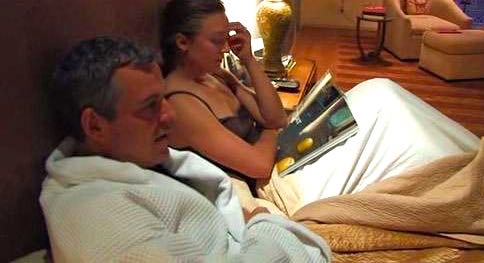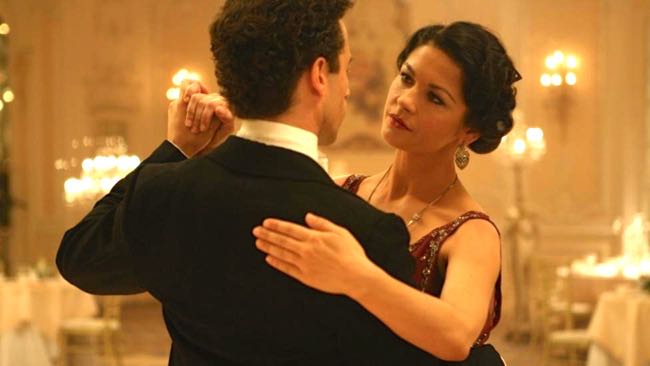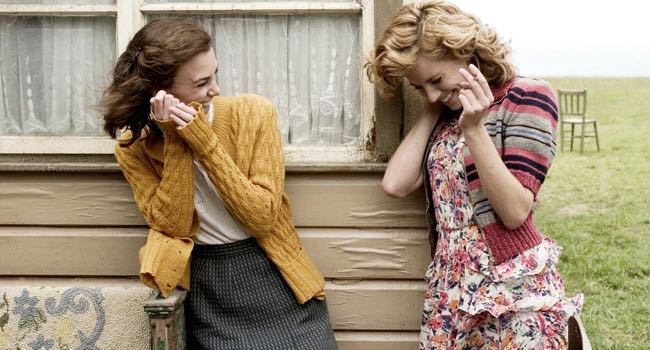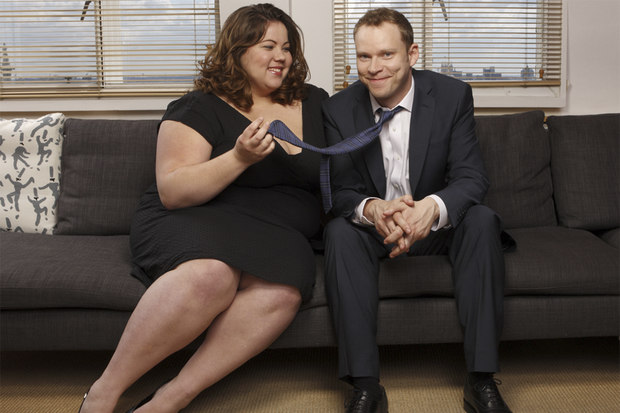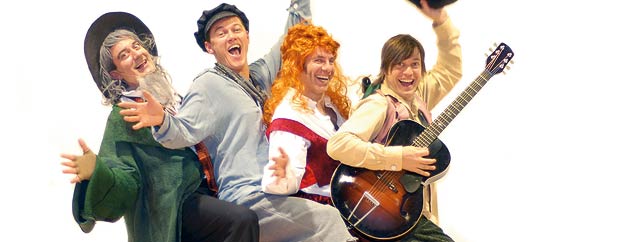 By Ray Bennett
By Ray Bennett
Sometimes all you want at the theater is a good time, and that’s just what’s on offer with “Dickens Unplugged,” a witty and agreeable show from one of the founders of London’s long-running spoof “The Complete Works of William Shakespeare.”
Born in New York, raised in California and based in London, Adam Long was one of the founders of the Reduced Shakespeare Company, and as writer, director and star he applies the same clever and irreverent principles to the life, times and works of Charles Dickens.
With a troupe of energetic performers who play guitar, dress up in drag and generally make fun of every Dickens plotline and cliche, Long provides an evening guaranteed to please.
Gabriel Vick has a wickedly good time lampooning Dickens, while Joseph Attenborough, Matthew Hendrickson, Simon Jermond and Long play assorted characters from Dickens’ life and books.
Literary snobs had better stay home as the boys, in the form of “The best Charles Dickens tribute band in Santa Cruz, CA,” show little mercy for the writer’s sometimes heavy-handed and sentimental prose.
The adapters of his stories in film and the theater are not spared either, with the musical “Oliver!” and the filmed versions of “A Christmas Carol” especially hauled over the satirical coals.
“Would you like to come and live with a kind-hearted Jew with a thing for little boys?” an oversized Oliver is asked, while Nancy sings the anthem to her beloved thug Bill, “As Long as He Beats Me.”
Such stories as “Bleak House” and “The Old Curiosity Shop” are dispatched in a few withering bars of song, while “David Copperfield,” “Great Expectations” and “A Tale of Two Cities” are given longer but no less savage treatment.
Long has some lines in which some of the fictional characters complain to their creator about how miserable they are. When Mr. Micawber from “Copperfield” does that, Dickens chides him, “It could have been worse, you could have been Uriah Heep.”
The music is infectious and the players appear to be having just as much fun as the audience, which is sometimes a very good thing.
Venue: Comedy Theatre, runs through Sept. 21; Cast: Joseph Attenborough, Matthew Hendrickson, Simon Jermond, Adam Long, Gabriel Vick. Playwright-Director: Adam Long. Designer: Lez Brotherston. Lighting Designer: Jon Clark. Sound Designer: Gareth Owen for Orbital Sound.
This review appeared in The Hollywood Reporter.

